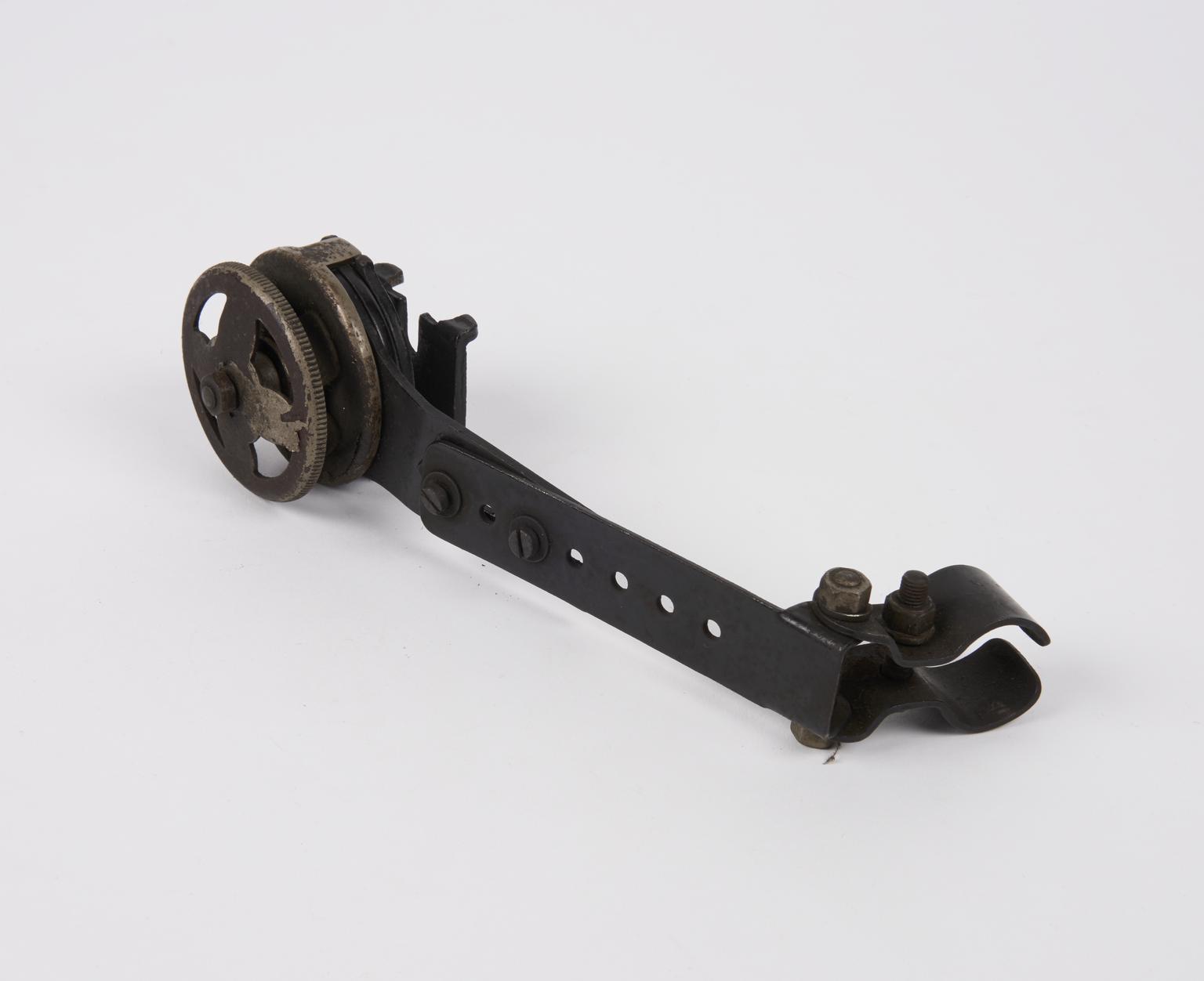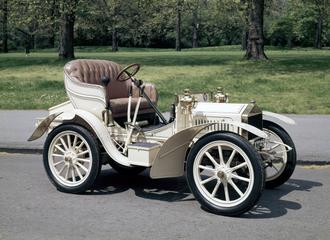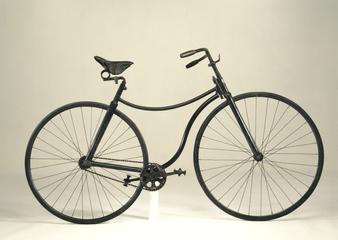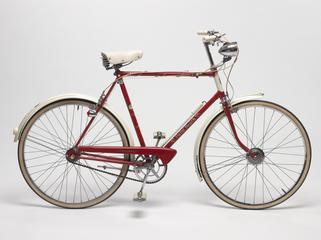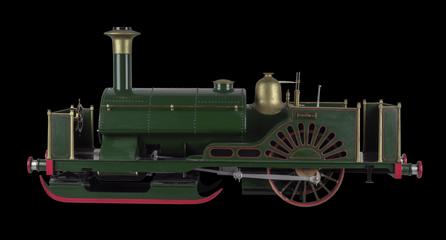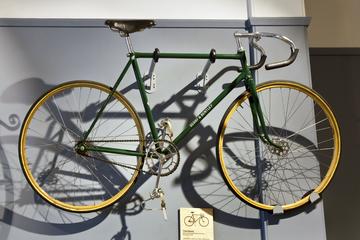Zenith-Gradua motor bicycle, fitted with 5 H.P. vee twin J.A.P. engine, 1920
This motorcycle is representative of the large and popular machines of the period which were so often used with a sidecar for long distance touring.
The main technical feature of this Zenith motorcycle is the unusual method of transmission This novel design was patented by Mr E. W. Barnes in 1907 and it provides an infinite range of speeds between the top ratio of 3.5 to 1 and the bottom ratio of 6.75 to 1. The engine shaft carries an expanding and contracting pulley, while the rear wheel moves backward of forward in conjunction with this pulley so as to maintain a constant driving belt tension irrespective of the drive ratio selected. While the pulley is opened to its full extent, the driving belt runs free on a flat loose ring at the bottom of the groove thus providing a ‘free’ engine, this position being equivalent to ‘neutral’. No clutch is fitted.
This Zenith Gradua has an air-cooled side-valve JAP engine having two cylinders set at an angle of 50 degrees, each cylinder having a bore of 76 mm. and a stroke of 85 mm. An Amac carburettor and a chain-driven magneto are fitted.


